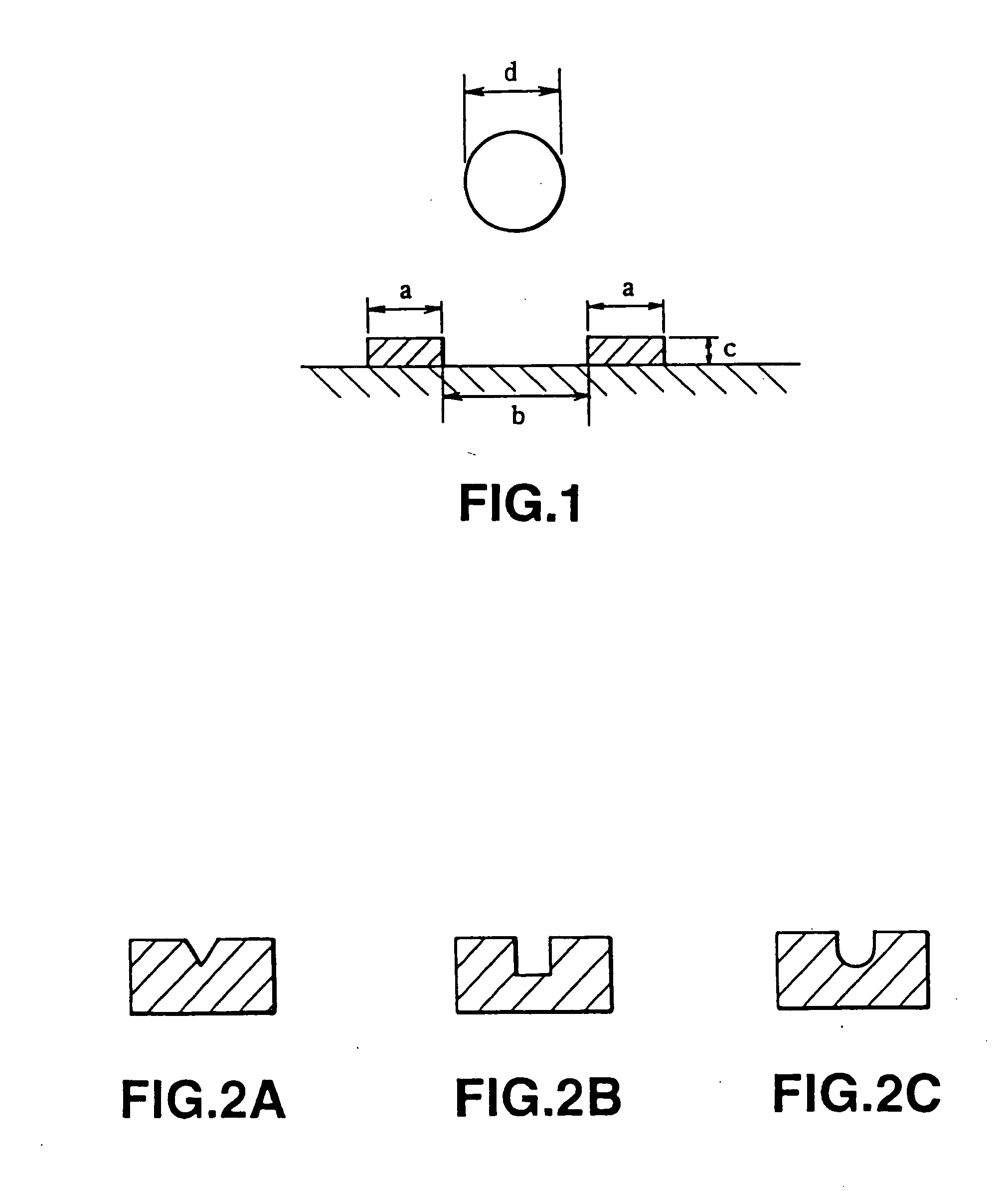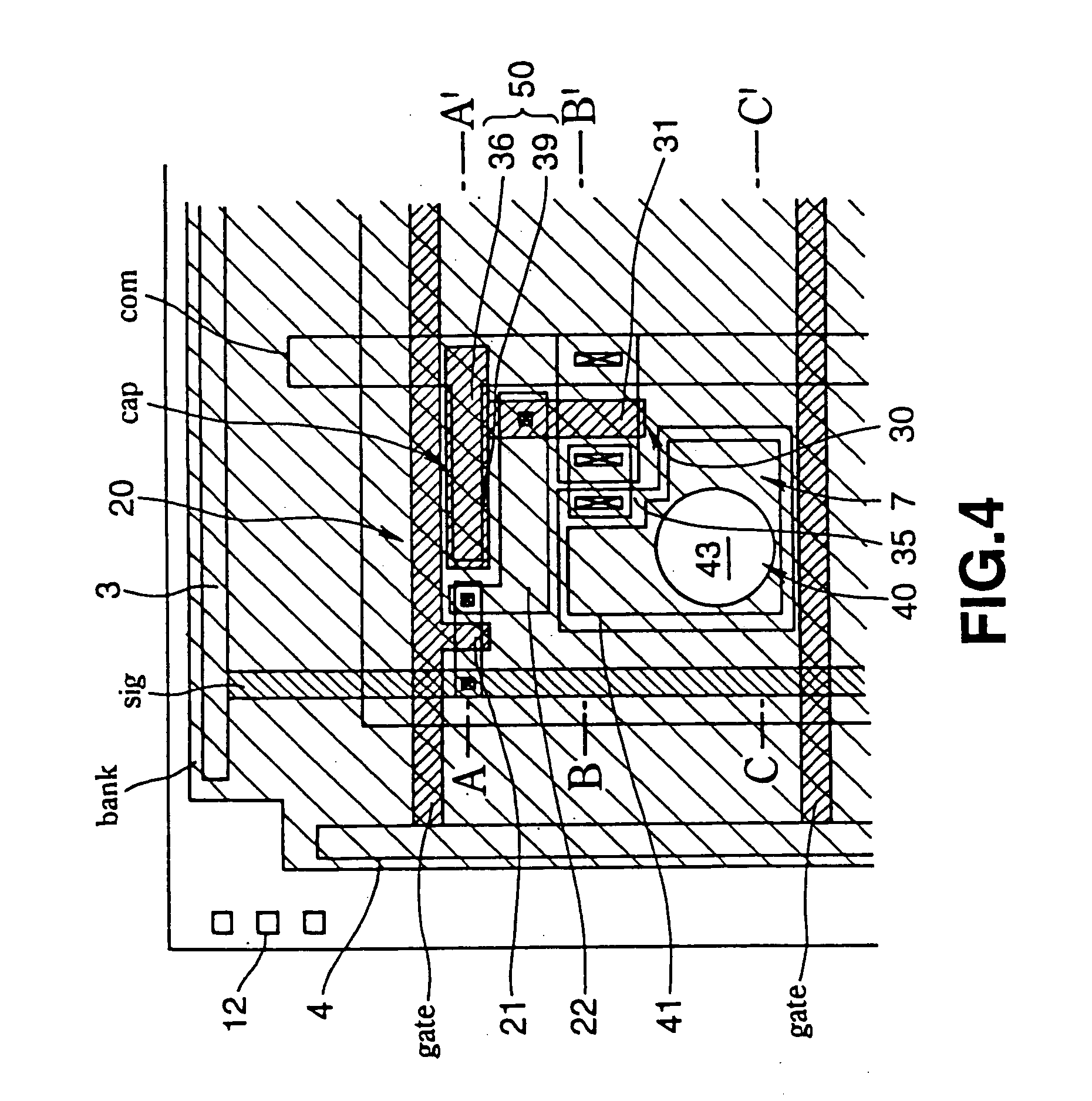Method of forming thin film patterning substrate including formation of banks
a technology of thin film patterning and substrate, applied in the direction of identification means, instruments, transportation and packaging, etc., can solve the problems of large volume of liquid material deployed in the enclosed area of the partitioning member, large volume of liquid material deployed in the area after film fabrication, and large volume of liquid material deployed in the enclosed area. , to achieve the effect of fine and highly detailed patterning, high precision and good yield
- Summary
- Abstract
- Description
- Claims
- Application Information
AI Technical Summary
Benefits of technology
Problems solved by technology
Method used
Image
Examples
first embodiment (
(1) First Embodiment (Aspect Employing Ink Jet Method)
[0100] In a display device having, on a substrate, banks of a prescribed height, and a thin film layer formed by an ink jet method on the surface of the substrate divided by those banks, when the width of the banks is made a (μm), the height thereof is made c (μm), the width of the areas to be coated, divided by the banks, is made b (μm), and the diameter of the liquid droplets of the liquid material forming the thin film layer is made d (μm), the banks are formed on the substrate so as to satisfy the relationships a>d / 4, d / 2t0 (where t0 is the film thickness of the thin film layer in μm), and c>1 / 2×d / b.
[0101]FIG. 1 is a model diagram for describing the relationship between the liquid droplets and the banks provided on the substrate when the display device of the present invention is formed by an ink jet method.
[0102] (a) Bank Configuration
[0103] The banks (also called risers or partitioning members) provided on the substrate ...
second embodiment (
(2) Second Embodiment (Aspect Employing Dipping or Spin-Coating Method)
[0123] The inventors discovered that, in a display device having a thin film layer formed by a dipping or spin-coating method, wherein banks of a prescribed height and areas to be coated partitioned by those banks are provided on a substrate, and surface treatment is performed as desired, the objects of the present invention can be achieved even with a thin film formation method characterized by the fact that the thin film layer is formed using a liquid material having a surface tension of 30 dyne / cm. In particular, with the display device described above, unlike in cases where coating is done using an ink jet process, the objects mentioned can be achieved by controlling the surface energy of the liquid material in addition to the surface energy of the banks and substrate, without imposing any limitation whatever on the shape or size of the banks or areas to be coated. It is therewith possible, furthermore, to ef...
specific embodiment aspect
(3) Third Embodiment (Specific Embodiment Aspect of Display Device)
[0125] (Configuration)
[0126]FIG. 3 is a model block diagram of the overall layout of an active-matrix type display device in this embodiment aspect. FIG. 4 is a plan of one pixel in FIG. 3, and FIG. 5A-5C are cross-sections in the A-A plane, B-B plane, and C-C plane, respectively, in FIG. 4.
[0127] The active-matrix type display device of this embodying aspect comprises a display unit 11 in the center portion of a transparent substrate 10. In the peripheral portion of the transparent substrate 10 is provided a data-side drive circuit 3 and a scanning-side drive circuit 4. Data lines SIG are wired to the display unit 11 from the data side drive circuit 3, and scanning lines GATE are wired from the scanning side drive circuit 4. In these drive circuits 3 and 4 are configured complimentary TFTs by an N-type TFT and a P-type TFT (not shown). These complementary TFTs configure shift register circuits, level shifter circu...
PUM
| Property | Measurement | Unit |
|---|---|---|
| angle of contact | aaaaa | aaaaa |
| angle of contact | aaaaa | aaaaa |
| angle of contact | aaaaa | aaaaa |
Abstract
Description
Claims
Application Information
 Login to View More
Login to View More - R&D
- Intellectual Property
- Life Sciences
- Materials
- Tech Scout
- Unparalleled Data Quality
- Higher Quality Content
- 60% Fewer Hallucinations
Browse by: Latest US Patents, China's latest patents, Technical Efficacy Thesaurus, Application Domain, Technology Topic, Popular Technical Reports.
© 2025 PatSnap. All rights reserved.Legal|Privacy policy|Modern Slavery Act Transparency Statement|Sitemap|About US| Contact US: help@patsnap.com



